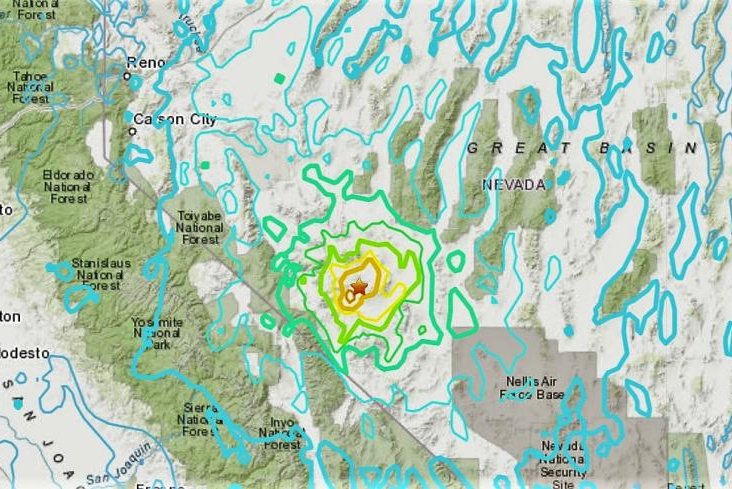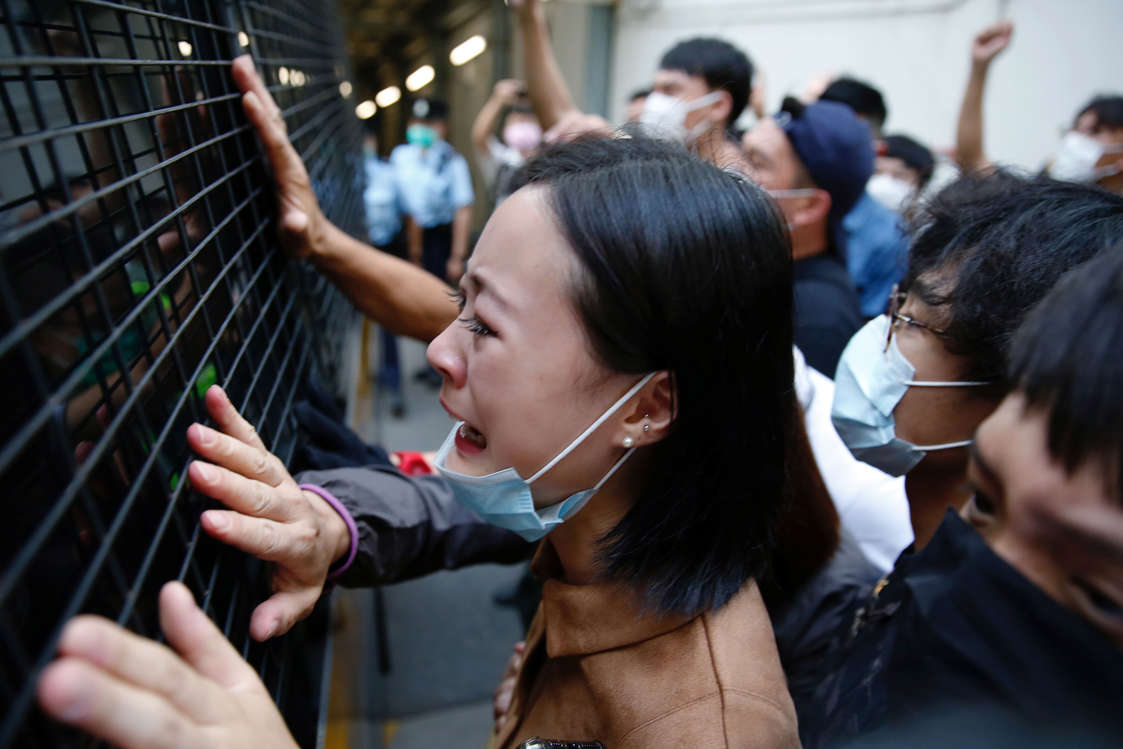Oil, manufacturing had best luck with pandemic loans
By MIKE SCHNEIDER May 14, 2020

1 of 3
In this Thursday, April 30, 2020, photo storage tanks at a refinery along the Houston Ship Channel are seen with downtown Houston in the background. Like in other cities, the coronavirus has shut down much of Houston's economic activity, slashing thousands of jobs, while at the same time, the price of oil plunged below zero recently as demand plummeted due to the worldwide lockdown to stop the spread of the virus. This one-two punch from COVID-19 and the collapse in oil prices will make it much harder for Houston to recover from a looming recession, according to economists. (AP Photo/David J. Phillip)
Almost 75% of small businesses in a survey applied for help from a federal loan program designed to keep workers employed during the coronavirus pandemic, but only 38% of small businesses received any money, according to survey results the U.S. Census Bureau released Thursday.
Oil extraction and mining businesses had the best success in getting loans from the Paycheck Protection Program with more than half of businesses surveyed in that sector reporting getting some help, according to the Census Bureau’s Small Business Pulse Survey.
Just under half of small businesses in manufacturing and about 45% of small businesses in accommodations and food services reported receiving loans, the survey said.
Utilities fared the worst of all sectors with less than a quarter of small businesses in that sector getting loans, according to the survey.
The Paycheck Protection Program administered by the Small Business Administration has dispensed more than $530 billion in low-cost loans to millions of small businesses to cushion them from the sharp downturn induced by the coronavirus.
The Census Bureau survey showed that nearly two-thirds of small businesses in Arkansas, Maine and Oklahoma, had received loans, among the highest in the nation. Trailing the rest of the nation was California, where just over a fifth of small businesses received the emergency loans.
When asked about the disparities in an email, SBA press director Carol Wilkerson said the agency didn’t have a comment to provide.
The Census Bureau launched the Small Business Pulse Survey last month in order to capture the impact of the pandemic on small businesses in near real-time. The release on Thursday was the first of what will be weekly updates. The initial survey was sent to 100,915 small businesses, and 22,449 small businesses responded from April 26 to May 2.
The survey targeted nonfarm, single-location employer businesses with less than 500 employees and receipts of $1,000 or more.
Almost three-quarters of the small businesses surveyed said they had experienced a drop in revenue, and more than a quarter said they had decreased the size of their workforce. More than 11% of the small businesses reported missing a loan payment, but that rose to 30% for small businesses in accommodations and food services, according to the survey.
___
Follow Mike Schneider at http://twitter.com/MikeSchneiderAP
By MIKE SCHNEIDER May 14, 2020

1 of 3
In this Thursday, April 30, 2020, photo storage tanks at a refinery along the Houston Ship Channel are seen with downtown Houston in the background. Like in other cities, the coronavirus has shut down much of Houston's economic activity, slashing thousands of jobs, while at the same time, the price of oil plunged below zero recently as demand plummeted due to the worldwide lockdown to stop the spread of the virus. This one-two punch from COVID-19 and the collapse in oil prices will make it much harder for Houston to recover from a looming recession, according to economists. (AP Photo/David J. Phillip)
Almost 75% of small businesses in a survey applied for help from a federal loan program designed to keep workers employed during the coronavirus pandemic, but only 38% of small businesses received any money, according to survey results the U.S. Census Bureau released Thursday.
Oil extraction and mining businesses had the best success in getting loans from the Paycheck Protection Program with more than half of businesses surveyed in that sector reporting getting some help, according to the Census Bureau’s Small Business Pulse Survey.
Just under half of small businesses in manufacturing and about 45% of small businesses in accommodations and food services reported receiving loans, the survey said.
Utilities fared the worst of all sectors with less than a quarter of small businesses in that sector getting loans, according to the survey.
The Paycheck Protection Program administered by the Small Business Administration has dispensed more than $530 billion in low-cost loans to millions of small businesses to cushion them from the sharp downturn induced by the coronavirus.
The Census Bureau survey showed that nearly two-thirds of small businesses in Arkansas, Maine and Oklahoma, had received loans, among the highest in the nation. Trailing the rest of the nation was California, where just over a fifth of small businesses received the emergency loans.
When asked about the disparities in an email, SBA press director Carol Wilkerson said the agency didn’t have a comment to provide.
The Census Bureau launched the Small Business Pulse Survey last month in order to capture the impact of the pandemic on small businesses in near real-time. The release on Thursday was the first of what will be weekly updates. The initial survey was sent to 100,915 small businesses, and 22,449 small businesses responded from April 26 to May 2.
The survey targeted nonfarm, single-location employer businesses with less than 500 employees and receipts of $1,000 or more.
Almost three-quarters of the small businesses surveyed said they had experienced a drop in revenue, and more than a quarter said they had decreased the size of their workforce. More than 11% of the small businesses reported missing a loan payment, but that rose to 30% for small businesses in accommodations and food services, according to the survey.
___
Follow Mike Schneider at http://twitter.com/MikeSchneiderAP










































 50 SLIDES © Navesh Chitrakar/Reuters Slideshow by photo services
50 SLIDES © Navesh Chitrakar/Reuters Slideshow by photo services © AFP/Getty Images Police arrest a pro-democracy demonstrator in the Mong Kok district of Hong Kong on May 10 this year.
© AFP/Getty Images Police arrest a pro-democracy demonstrator in the Mong Kok district of Hong Kong on May 10 this year. VISIT SITE
VISIT SITE 